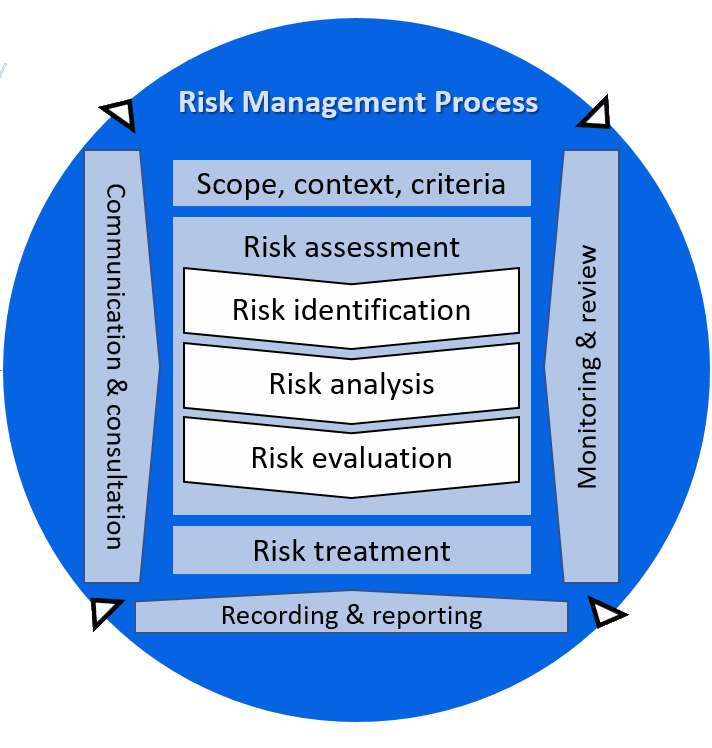By Horst Simon, The Risk Culture Builder
Volumes have been written on the cause of the crisis the world is in, surveys have been done and many fingers are pointing in every direction—a couple of these are pointing straight at us, the Risk Professionals.
It is time for us to accept that risk management, as we know it, failed; and for as long as we try to re-direct or break the fingers pointing at us—we will be stuck in this crisis. It is time to renovate risk management. The past is no longer a roadmap for the future; old concepts must die and with them the practice of converting historic data into (useless) risk reports.
Let us come clean and move on, the earlier the better for all. Which other industry has so many frameworks, so many different processes and so many different standards, regulations and so-called guidance documents? Which other industry has so many people claiming to be experts and trying to squeeze a quick buck out of something nobody can ever be an expert in? Too many “somebodies” out there who are “certified” by nobodies after a couple of days of training and a multiple-choice “exam”; too much education done by non-educators.
Any process older than 5 years is outdated; we live in a world of dynamic change, the pace of which is ever increasing and with it, the levels of Risk Exposure. The basic Risk Management process cycle is one of those.

Let us look at Risk Identification: we tried in many different ways to identify all the risks—until a volcano sneezed and we realized that we have not; and can never, identify all the risks. Let us accept that and move on. The size of your risk register is not related to, nor is it an indication of the effectiveness of your risk management process.
Next, we get to Assessment and Analysis: Those who thought they were good at risk identification moved on to quantification.
Sadly, many are still stuck there, thinking that models can control and mitigate risk. Some in the alternative movement is trying to justify the great cost of their models by using the results for good purposes, like calculating economic capital etc. Thinking of which; the gross income of most banks dropped in 2008, so how cool was it for those using the Basic Indicator or Standardised approach for Operational Risk under the Basle Accord —in a time when their operational risks increased significantly, their capital charge came down.
Even sadder is that in my risk survey on LinkedIn, only 26% of the respondents said they have no problems with the data in their systems. Does that mean that 74% of corporate risk reports and many regulatory compliance calculations are sucked out of useless data of varied degrees? The quantity of data is often so impressive that people forget that the underlying quality might be bad. (or is confirmed bad like the 74% of recent survey respondents)

Risk reporting, control and treatment: How wrong did we get red, amber, green!
Now everybody wants every risk to be green, because green is good. Green on a risk report is perceived to mean, “Do nothing”, but that is the quickest way for those risks to shoot to red. Then we get to amber, what a nice place to be- all risks are under control and we choose to overlook the fact that those controls might not be efficient or can be completely ineffective.
DANGER ZONE- those risks in the red zone, the bad zone. The red zone is where you make the most money, but it is also the place that requires the most effort in risk control. For as long as red is perceived as bad we will be stuck with average risk management effort (amber) or no risk management effort (green). Therefore, the red zone is the best zone with the biggest returns—if you are prepared to put in the effort.
If you have a formal monthly risk report it is generally 28 days too late, frightening to think some have a quarterly risk report, or as a friend commented recently, an ANNUAL risk report! It is thus not about the size, it’s all about the timing; having a risk nervous system that runs accurate risk information from all points inside the organisation (and outside) and having “live” dashboard reporting on the company intranet. The earlier people know, the better the decisions and the smaller the losses.
Secondly, the sole purpose of many risk management processes is to feed the risk report, often producing the report is the sole purpose of the risk management department. The outcomes of a risk management process are much more than models and risk reports. What do you do with the information you have? If your risk management department cannot show a positive Return on Investment—get rid of them!
We already know that the effectiveness of your risk management process is not linked to the size of your risk register. Similarly, it is also not linked to the thickness of your executive risk report. Anyway, we have sanctified board risk reports to the extent that the difference between what the top thinks and the bottom knows is so big that those in the middle are just slipping into the ditch.
When things got out-of-hand; the three Lines of Defence model was created by consultants and sold-off as the magic that will make it work. The 3LoD model drives the wrong mindset. There is nothing to defend against, Risk equals Reward, if you do not attack, you are the target. You are either at the table or on the menu. Your time in the trench is wasted; you do not even know what is on the battlefield of business. The 3LoD model is outdated and contributes nothing to you getting more Reward.
It is also devastating to see people still cling to the 3LoD concept and now even thinking of 4LoD, but encouraging to see they want to train the front-line people risk management skills!
I think we must move on even further as the 3LoD model also drives the wrong mindset; and we must forget about external assurance by third parties to tell you how great this works, firstly these will have to be paid for that service and the best assurances will go to the highest payers and nobody will take any accountability; and secondly, nobody can “certify” risk management practice in any shape or form.
Risk decision-making has always been on the front-line! The problem is that the 3LoD model started driving the wrong mindset that there are 2 more levels of “defence” and added to that is the fact that the front-line people were never trained; not even in basic risk management skills. Risk Culture Building is the only way forward and claiming it is good to move risk decision-making around between different parts of the same business is absurd. All people must manage risk at all levels. Sadly, as I said earlier; in my experience, most organisations claiming to use the (outdated) 3LoD model never trained anyone on the first line in any aspect of risk management.

Processes and Systems: Most organisations have taken the easy way out (note: not the cheapest) and they built impressive risk management systems worth millions of dollars; but failing to address the fundamental issue of people. All risk management efforts are worthless without a risk nervous system—and only humans can add that.
We already know that there are no risk management experts; and in fact, we do not need any risk management experts! All we need is for every employee to know the basic risk management skills and principles; use them to evaluate the risks associated with his/her job and do something on a daily basis, to mitigate and control those risks. Risk Management success lies in embedding an effective risk management culture!
Prevent your business from crash-landing, change the way you see and approach risk management and execute that transformation; put in the effort and embed an effective risk management culture in your business, delivering good risk governance and building sustainable competitive advantage.
Risk management must be dynamic to achieve success and build value. It serves no purpose to just do a risk profile, evaluate the associated controls in terms of design and effectiveness and then claim to have a risk management process.
Internal and external changes are the biggest drivers for re-assessment of risk and the pace and intensity of change is not slowing down. Your carefully “workshopped” risk profile could be out of date at the end of the next business day.
We have lived with risk profiling as a result of the impact (severity) x likelihood (frequency) and we have completely missed the other two dimensions of risk profiling. Looking at risk in these two dimensions, as we have done for years; give us a risk profile that is a snapshot in time and on its own it is not of great value. It is at most a subjective quantification at that point in time. Many companies can produce these in a flash, but do they practice risk management?
We should look at risk profiling in four dimensions to practice risk management. We need to add direction and speed to these snapshots to really drive value. We need to compare all these snapshots over a period to see in which direction risks are moving and at what speed they are moving; that is when the value is added, moving away from just profiling to predicting—one step closer to forward-looking risk management.
This is also when things become a bit more complicated; the past is not always a roadmap to the future and with the pace and intensity of change ever increasing, we can safely say that the past can no longer predict the future.

So now that you are changing to 4-Dimensional Predictive Risk Profiling, keep in mind that many internal and external factors will influence the speed and direction and these would also need to be incorporated in your outcomes and action plans.
The discipline of risk management has evolved from strictly a value preservation-based focus to a balanced focus between protecting assets and creating or enhancing value. A flexible and dynamic risk management discipline is uniquely positioned to quickly adapt to change and identify opportunistic risk to create new streams of revenue and increase value.
Welcome to transformation, be the change you want to see!

